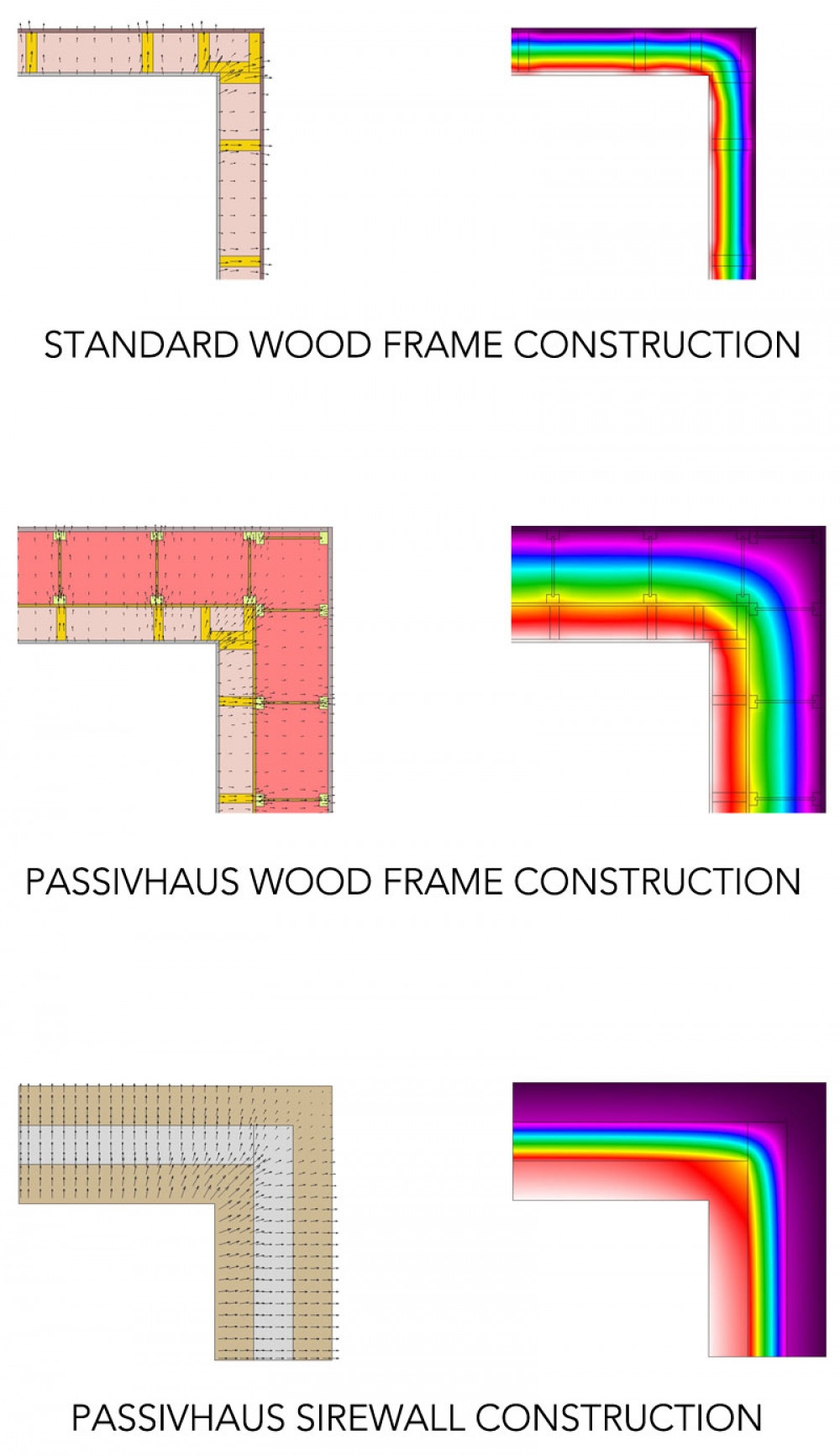We assign a very high priority to comfort in buildings - specifically, thermal comfort. One of the basic distinctions between being inside' and 'outside' is that when we are inside, we expect to be comfortable. We essentially live in two climates - interior and exterior - and the construction assemblies that make up the floors, walls, and ceilings of our buildings, often referred to as the building envelope, mediates between these two climates.

In mainstream construction, this is done primarily with 'active' mechanical systems... air conditioners and furnaces provide cooling or heating to the interior. The equipment is 'sized' to be able to handle whatever demand for heating or cooling the architecture creates. This practice is so prevalent it is broadly seen as the only reasonable approach.
In passivhaus architecture, however, this 'conventional wisdom' is turned upside down. Energy use is not sized to accommodate the architecture; instead the architecture is designed to provide the comfort we need using a minimal amount of equipment and energy. Passivhaus design requires several design principals to be effectively integrated in architectural design, one of which is a very high performance building envelope. The images above show forensically accurate computer analysis of how energy flows between the interior and exterior of three wall assemblies.
The top images show how a mainstream ('built to code') wood frame wall passes thermal energy through the various components, including a corner condition. The energy performance is relatively poor, and comfort is presumably achieved by means of pumping whatever quantities of energy are required through expensive machinery.
The middle row shows a much higher level of performance typical of a wood frame wall assembled to passivhaus standards, and the bottom row shows a SIREWALL (Stabilized Insulated Rammed Earth Wall) wall built to passivhaus standards.
The bottom right image reveals crucial information: the wall is essentially a sandwich of solid stone each side of insulation in the core, and the interior half of the stone is stabilized at the temperature of the interior climate. The exterior half of the wall is stabilized at the temperature of the exterior climate.
That interior half of the stone wall, which literally weighs tons, will help keep the interior temperature and humidity consistent and comfortable regardless of fluctuations in the exterior climate, and will also serve to comfortably store radiant energy passivhaus architecture is designed to gather in the winter. The 'thermal mass' will essentially act like a big hot water bottle in winter or icepack in summer. What you are seeing here is an ultimate building envelope from a thermal performance perspective that opens up the possibility of 'passive' comfort... comfort with freedom from machinery that is expensive to build, operate, maintain, and ultimately replace... and vulnerable to failure, especially during times of peak heating or cooling demand when you need it most. The engineered stone passivhaus wall (which is toxin- and maintenance-free and will never burn or rot) will perform as well 500 years from now as it will 5 months from now.
